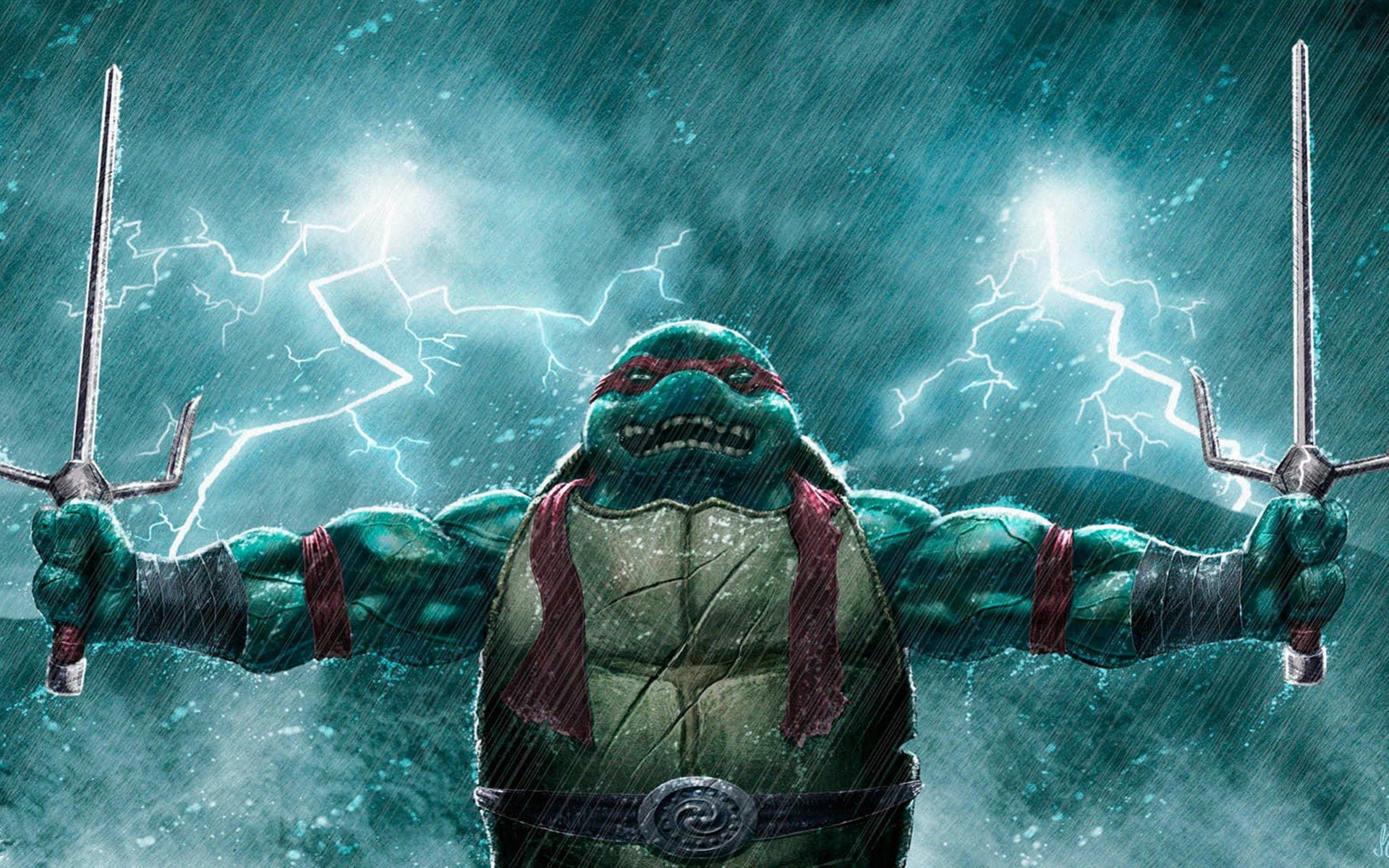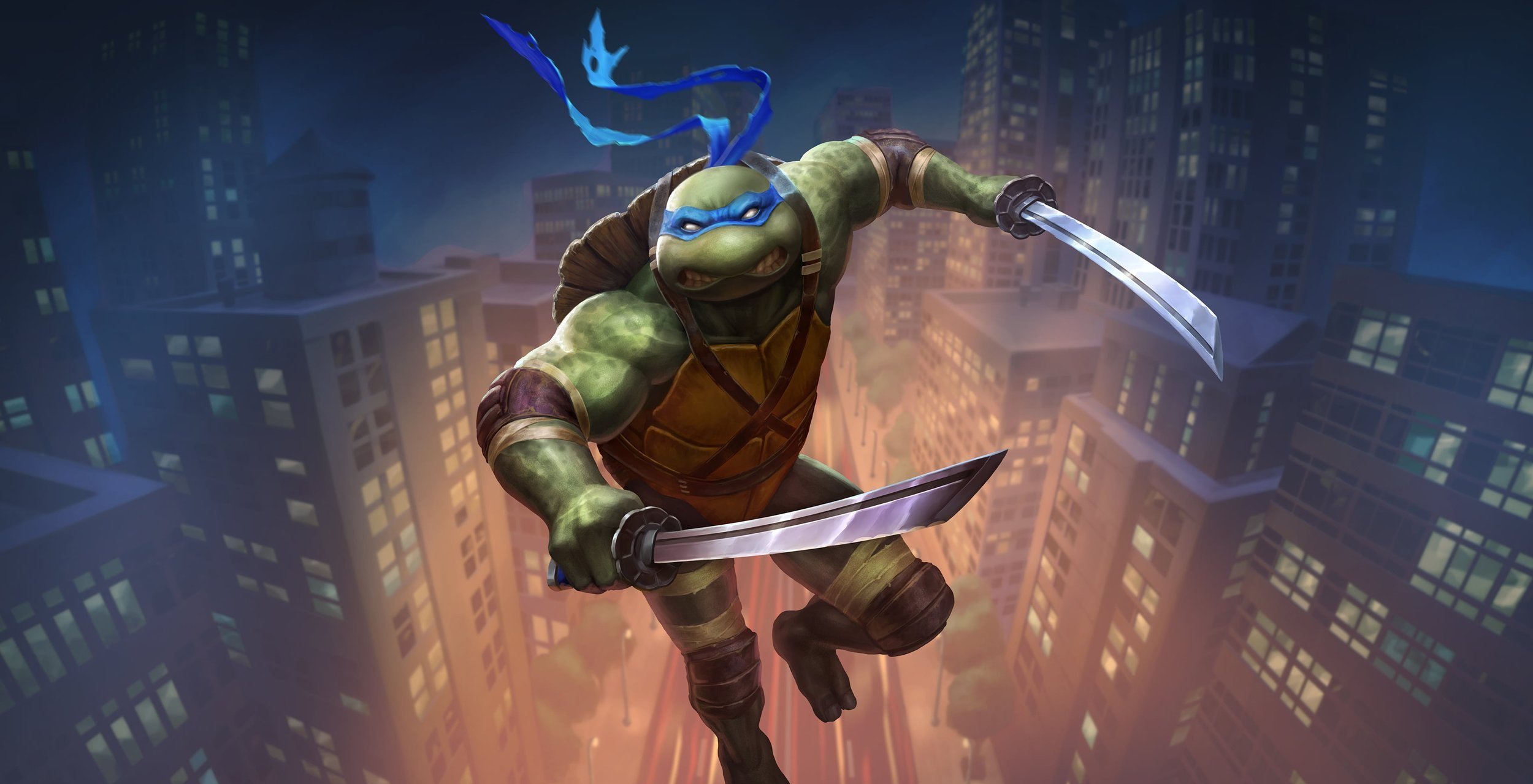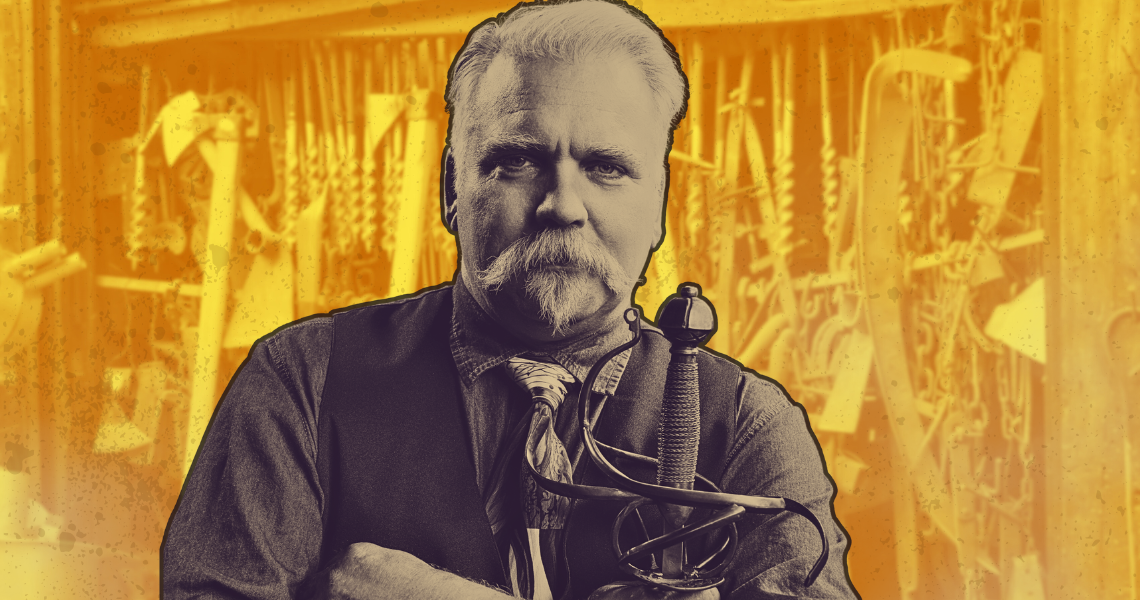TMNT Spotlight: Their Weapons of Choice, and a Country’s Choice to Ban Their Weapons
When the Teenage Mutant Ninja Turtles debuted in comic book form (waaaay back in 1984), they were certainly eclectic, but lived in a world of perpetual violence rendered in unforgiving black and white. And their weapons? They dispensed said violence at the end of blades, a bo staff, and skull-bashing nunchaku (“nunchucks”).
RELATED: FIVE TMNT CHARACTERS WE NEED TO SEE IN LIVE ACTION
After this little eclectic book did surprising sales, the creators (Kevin Eastman/Peter Laird) accepted a licensing deal with Playmates Toys, resulting in action figures, vehicles, and a made-for-kids cartoon. So, all that comic book violence, seriousness, sadness, and loss? Replaced with roller skates, unhealthy pizza consumption, color-coded masks, and unrelenting surfer-speak.
Yes, the animated Turtles were watered down, but their weapons – handheld extensions of their unique personalities – mostly remained. Wait… “mostly?”
Let’s take a look at some real-life history behind the bladed/bashing implements expressing the Turtles’ individuality, and the reason why a certain Turtle’s weapon was banned in the UK (and later replaced since Eastman and Laird do appreciate money).
Raphael
(Image credit: Mirage Studios)
Raphael is the loner; the instigator; the easily chuffed; and the most likely to enter a blind berserker rage.
Weapon(s) of choice: Twin Sai.
The sai is a traditional Okinawan weapon used for striking and stabbing. And although its origins point to Japan, there are existing records of similar weapons in Thailand, Indonesia, China, Vietnam, and India.
Sai wielders are made competent through five katas and two kihon katas. And these forms focus on utilizing sai as offensive, stabbing weapons, or defensive weapons through blocks and parries.
Banned from Television? No, because stabby/pokey weapons don’t incite violence (apparently).
Leonardo
(Image credit: Mirage Studios/Nickelodeon)
Leonardo is the leader (although not “officially”); he takes charge; he inspires. He’s also the unspoken protagonist, and frequently butts heads with the leadership-averse Raphael.
Weapon(s) of choice: Dual Katana
Used by samurai throughout feudal Japan, the katana is a standard (in size), slightly curved, single-edged sword featuring a square or circular guard. And for optimal wielding, it features extended grip space for two hands.
RELATED: WHO OWNS THE MOST POWERFUL SWORD IN THE UNIVERSE?
Katanas were often gifted by feudal lords (daimyo) to samurai, representing the spirituality, honor, and authority held by those who walk the sacred samurai path.
Banned from Television? No. Swords are absolutely safe. In fact, they should absolutely replace butter knives.
Donatello
(Image credit: Mirage Studios/Nickelodeon)
Donatello is the most “chill” Teenage Mutant Ninja Turtle. Always aspiring to remain (relatively) calm, Donatello is the unofficial second-in-command (if the Turtles truly recognized a hierarchy – although they’ll certainly follow Leonardo’s lead). He’s also the most tech-savvy and mechanically inclined in the group. And in the cartoon, this genius is taken to the extreme (he invented the Turtles’ turtle-themed vehicles, after all).
Weapon of Choice: The Bo Staff
Another Okinawan weapon, the bo staff is a martial arts implement usually made of hard and/or flexible wood. It’s been spin-striking bandits and drunkards since the beginning of Asia’s recorded history, used primarily for self defense by monks and commoners alike.
It’s also worth noting the bo staff was an integral part of “Tenshin Shōden Katori Shintō-ryū,” one of martial arts’ oldest surviving styles.
Banned from Television? Nope. It’s just a stick, right? How much trauma can one child sow with a simple, singular staff?
Michelangelo
(Image credit: Mirage Studios)
In the comics, Michelangelo was the most carefree Ninja Turtle. He was always ready for a scrap, but not as introspectively obsessed with it as another certain hot-blooded Turtle (yes, I’m talking about Raphael – but please don’t tell Raphael). Michelangelo was also a fan of comic books, and occasionally enjoyed writing.
In the 1987 animated series, Michelangelo was the most “surfer-inspired” of the bunch. His speech conjured the stoner-like ineptitude of Jeff Spicoli from Fast Times at Ridgemont High, and his obsession with pizza and partying far outweighed his brothers’ mostly tame cravings.
In fact, he’s mostly responsible for the Turtles’ “Cowabunga” battle cry, and liberal use of the word “dude.”
Weapon of Choice: Nunchaku
Yet another Okinawan weapon, nunchaku are traditionally two pieces of solid wood joined by a short rope or chain. In martial arts (particularly karate), the nunchaku are considered a training weapon – over time, they quicken hand movements and improve posture.
RELATED: THE MOST POWERFUL NON-SWORD WEAPONS IN MARVEL
The actual origin of nunchaku is a little hazy. One belief? They were originally a South-East Asian flail. Another? Derivative of a weapon hailing from the northern Philippines – the “tabak-toyak,” initially used to thresh soybeans and rice.
One such claim stated nunchaku were tools upgraded into weapons by peasants forbidden to carry “conventional” weapons. This was later deemed an exaggeration expressed by martial arts schools seeking to romantically exalt the weapon(s).
Banned from Television? YES! Where? Great Britain! Why? Because…because of Bruce Lee.
In 1973, Bruce Lee’s Enter the Dragon released around the world. And oh, what a lasting impression it made. Apparently, a segment of Great Britain was so enamored of the film, an uptick in crime inspired by Enter the Dragon’s martial arts action – specifically, use of nunchaku – afflicted the United Kingdom’s usually nunchaku-free shores.
And yes, the film was edited before entering Great Britain’s theaters, but was re-edited several more times as martial arts-themed violence continued. In fact, at the behest of police, James Ferman (newly appointed head of the British Board of Film Classification in 1975) removed nunchaku entirely from the film, and even replaced them with a…fighting stick (?)…on the movie poster.
So, when the Teenage Mutant Ninja Turtles cartoon was shopped around international markets circa 1987, most countries were happy to purchase the series, and therefore, dutifully entertain their children. But not Great Britain. Ooooooh, no.
When TMNT entered the UK, there were two noticeable changes: The title was changed to Teenage Mutant Hero Turtles (because “ninja” held dangerous implications of violence), and Michelangelo’s nunchaku were either edited out, or purposely (and obviously) covered up.
“The Turtles rarely brandished their individual implements, and especially if sausages, hoses, or other ridiculous potential crime stoppers were readily available.”
So, in Teenage Mutant Ninja Turtles: Season Three, to create a more…digestible product for international partners, Eastman and Laird agreed to remove Michelangelo’s nunchaku and replace them with a grappling hook – the less deadly (I guess?) “turtle line.” In fact, weapon use of any kind was toned down considerably; the Turtles rarely brandished their individual implements, and especially if sausages, hoses, or other ridiculous potential crime stoppers were readily available.
And there you have it – the history of the Turtles’ weapons, and one in particular that was a little too dangerous for British TV.
Was the UK right? Were the Teenage Mutant Ninja Turtles just a little too violent for British audiences? Should nary a nunchaku grace screens across Great Britain, forever and ever, and until the end of all violence everywhere? Let’s hear your position in the comments (below).
About The Author
More from Tiras
















